-
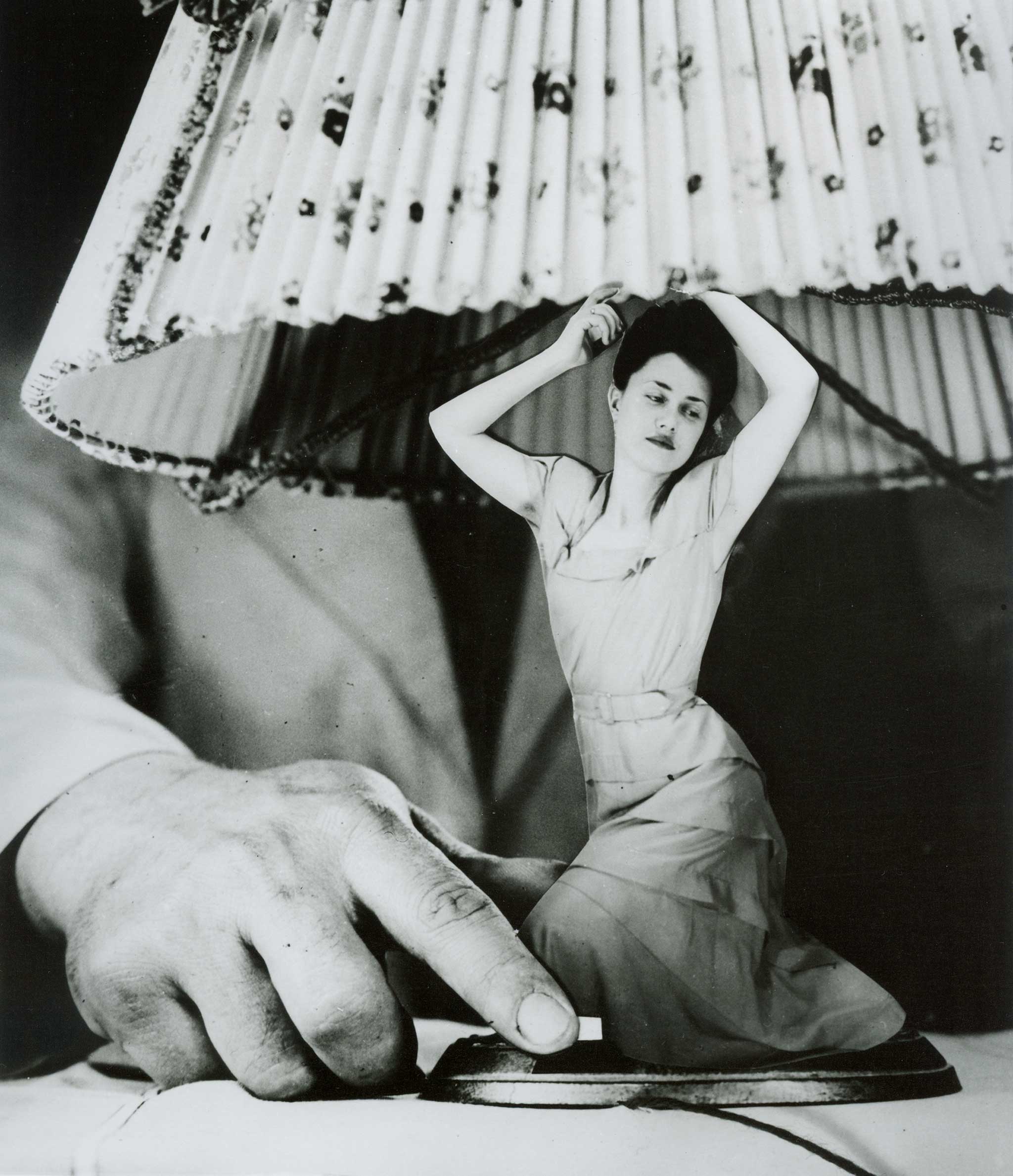 Sueño No. 1: "Articulos eléctricos para el hogar"
Sueño No. 1: "Articulos eléctricos para el hogar" In 1948 the Argentine women’s magazine Idilio introduced a weekly column called “Psychoanalysis Will Help You,” which invited readers to submit their dreams for analysis. Each week, one dream was illustrated with a photomontage by Stern, a Bauhaus-trained photographer and graphic designer who fled Berlin for Buenos Aires when the Nazis came to power. Over three years, Stern created 140 photomontages for the magazine, translating the unconscious fears and desires of its predominantly female readership into clever, compelling images. Here, a masculine hand swoops in to “turn on” a lamp whose base is a tiny, elegantly dressed woman. Rarely has female objectification been so erotically and electrically charged.
-
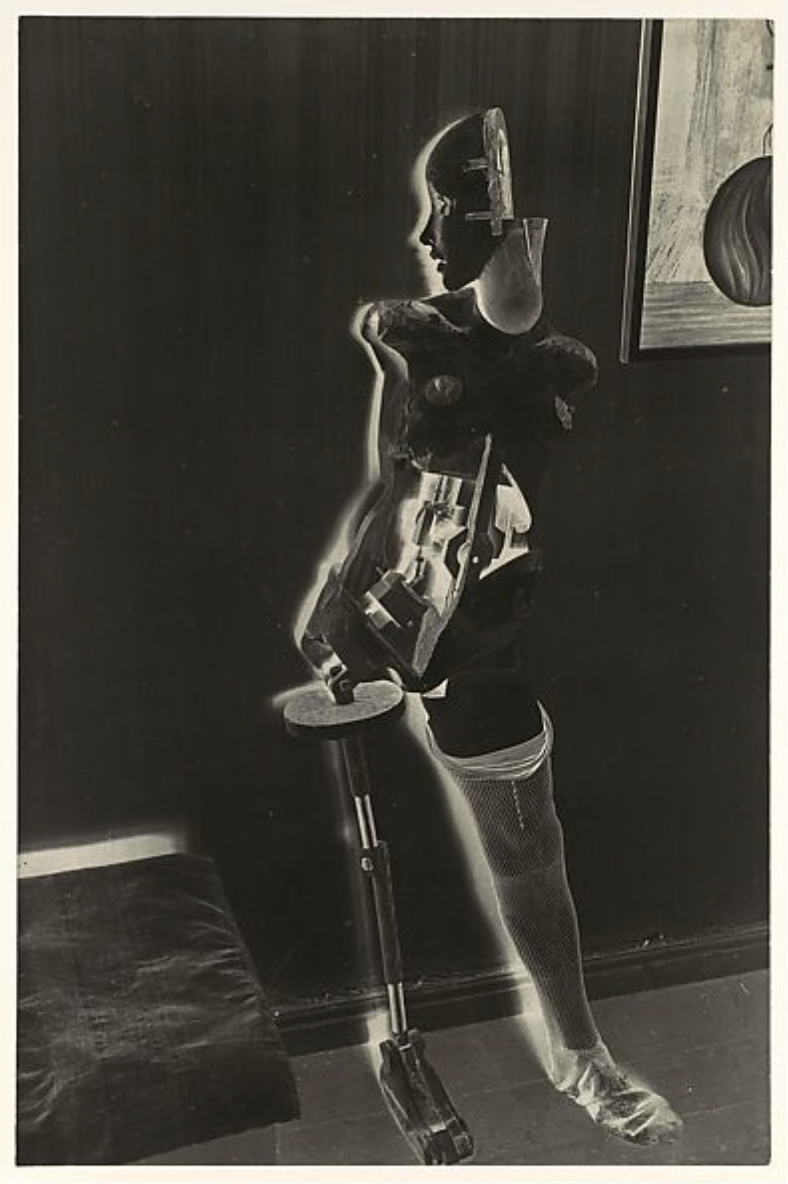 The Doll
The Doll Bellmer's obsession with dolls-his endless fabrication, reconstitution, and photographic presentation of them-was an effort to construct objects that would articulate his tortured desires in material form. The bizarre, robotic temptress in this negative print has an eerie electric aura. To love her, one would have to have, as the Surrealist poet Pierre Reverdy wrote, a "short circuit in the heart-system."
-
 Le Violon d'Ingres (Ingres's Violin)
Le Violon d'Ingres (Ingres's Violin) Man Ray was an admirer of the paintings of Jean-Auguste-Dominique Ingres and made a series of photographs, inspired by Ingres's languorous nudes, of the model Kiki in a turban. Painting the f-holes of a stringed instrument onto the photographic print and then rephotographing the print, Man Ray altered what was originally a classical nude. He also added the title Le Violon d'Ingres, a French idiom that means "hobby." The transformation of Kiki's body into a musical instrument with the crude addition of a few brushstrokes makes this a humorous image, but her armless form is also disturbing to contemplate. The title seems to suggest that, while playing the violin was Ingres's hobby, toying with Kiki was a pastime of Man Ray. The picture maintains a tension between objectification and appreciation of the female form.
-
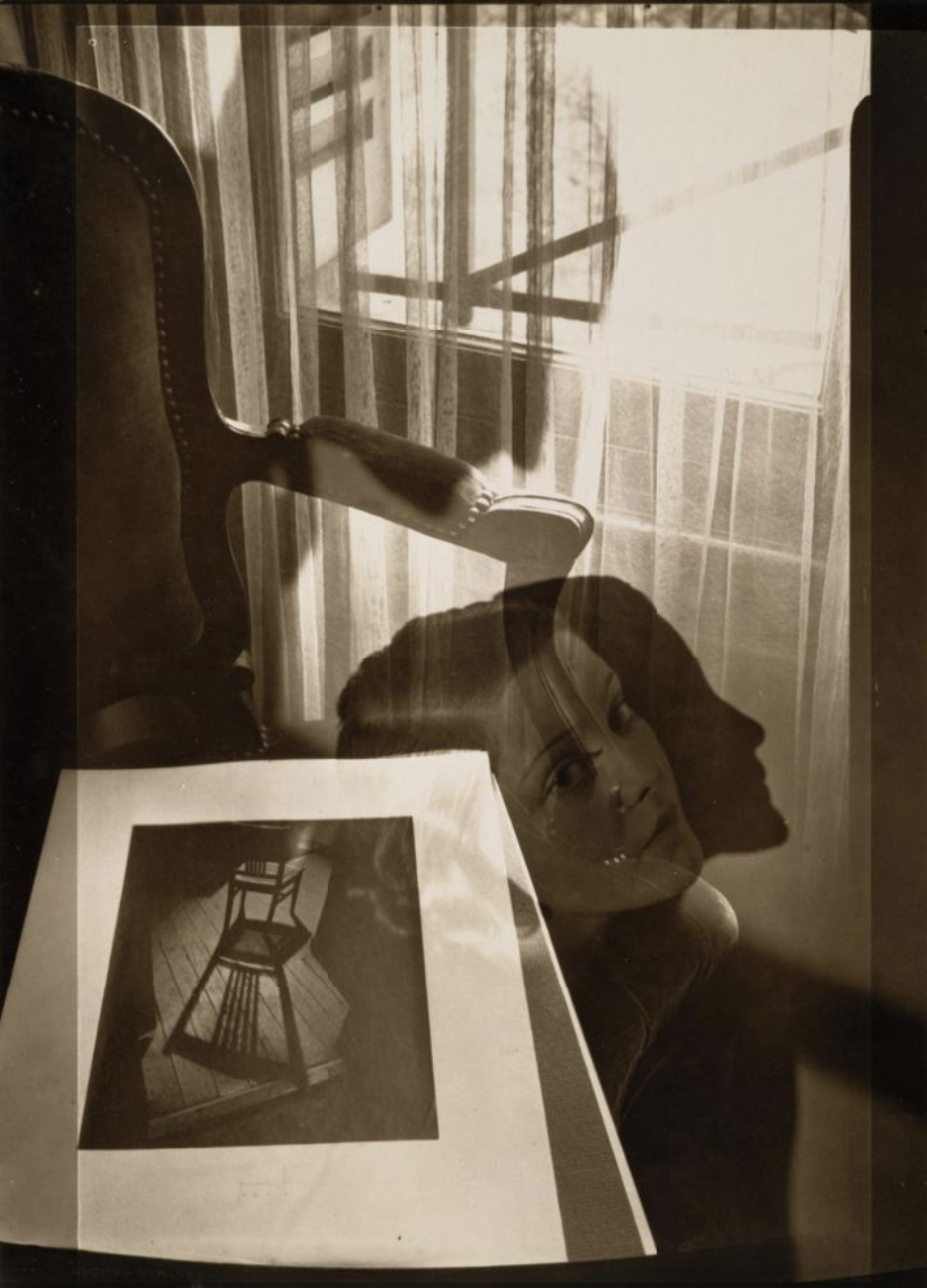 Composition
Composition This photograph is informed by the artist's experiences as an advertising photographer, X-ray technician, and assistant to Man Ray.
Printing through a sandwich of several negatives.
-
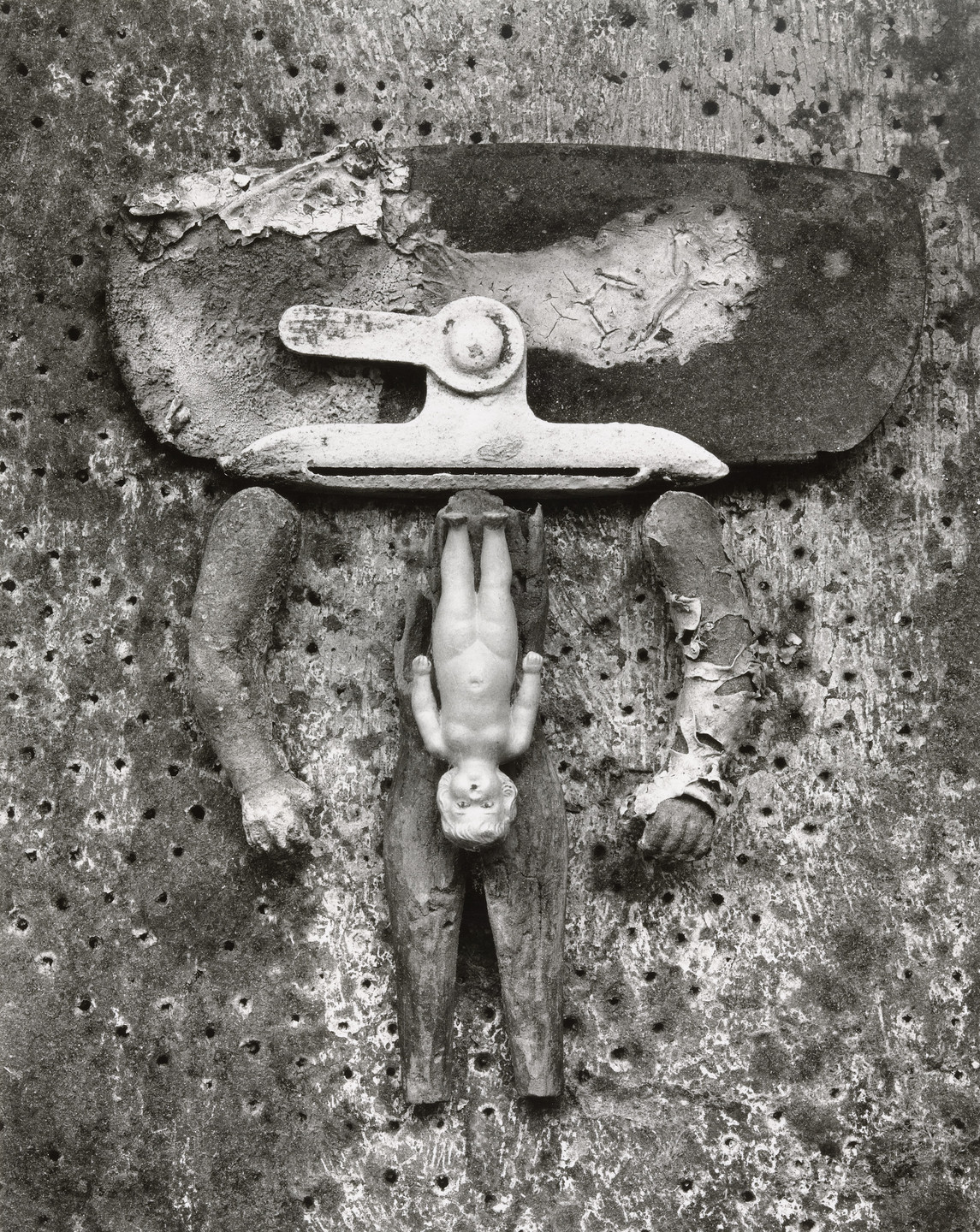 Valise d'Adam
Valise d'Adam Against a backdrop of rusting metal, Frederick Sommer arranged a grouping of found objects. A clipboard clamp represents a head and shoulders while dirty, cracking doll's arms and legs provide more literal context, defining the object as a human body. Within that fragmented body, Sommer places a complete doll with its head pointed downward, as if ready to be born.
The photograph's French title, Valise d'Adam, or as Sommer translated it, Adam's Traveling Case, is a sly reference to the idea that man travels through woman into the world, and perhaps, woman even carries man through life.
-
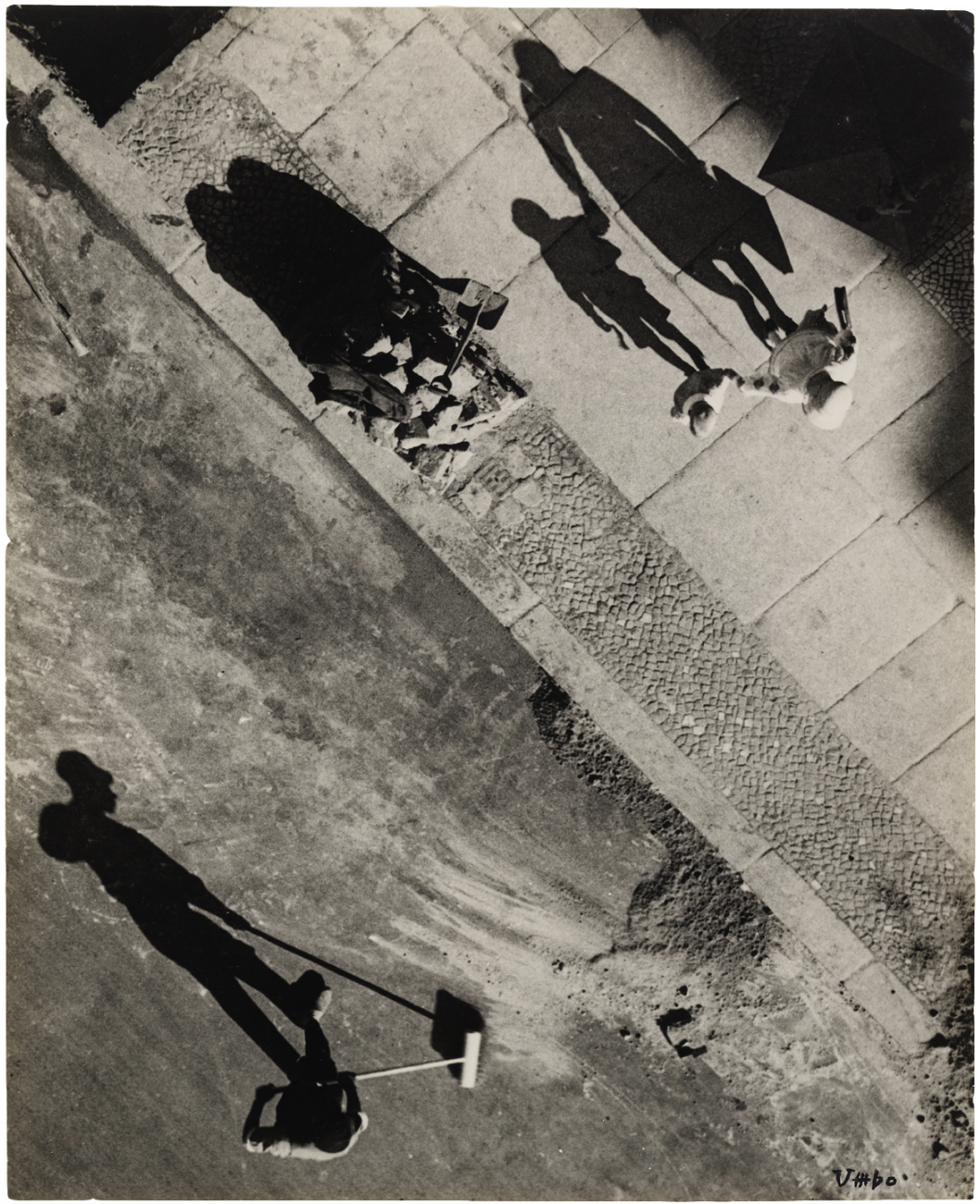 Mystery of the Street
Mystery of the Street This photograph does not describe what Otto Umbehr saw when he looked out his window in Berlin, but what he discovered when he turned his overhead view of the street upside-down. His simple inversion (indicated by his signature "Umbo" in the lower right corner) posits an unsettling world in which the insubstantial dominates the substantial, and imagination intercepts cognition.
-
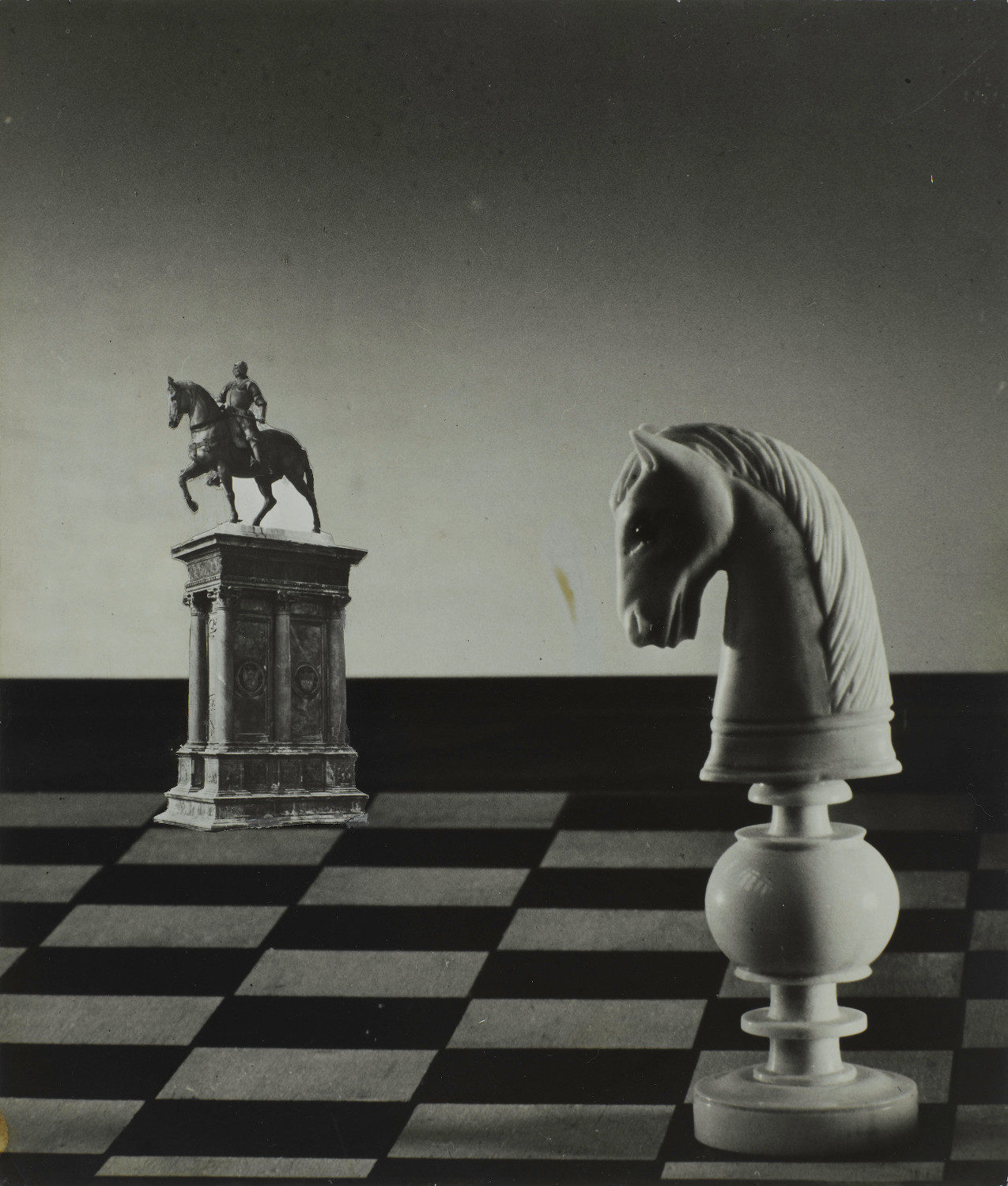 Cavalier
Cavalier Surrealist Gelatin Silver Print; Photographic Print created by Dora Maar in c.1936.
-
 Per Annum
Per Annum John Havinden was one of London's leading commercial photographers of the 1930s. He used this image for his trade calendar in 1936, the year that the International Surrealist Exhibition was held in London. It shows the combined influence on his work of Surrealism and the modernist design aesthetic. The abstract composition is based on formal, geometric elements but rendered mysterious by the atmospheric background and dramatic lighting.
-
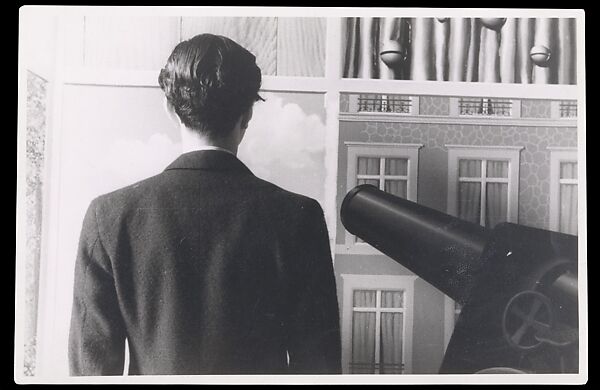 Edward James in front of "On the Threshold of Liberty"
Edward James in front of "On the Threshold of Liberty" Edward James was an eccentric poet, collector, and patron of both Dalí and Magritte. In 1937, when Magritte visited James in London, he painted a vertical version of his 1929 canvas On the Threshold of Liberty to install in the stairwell; he also photographed his host and patron in front of the painting.
-
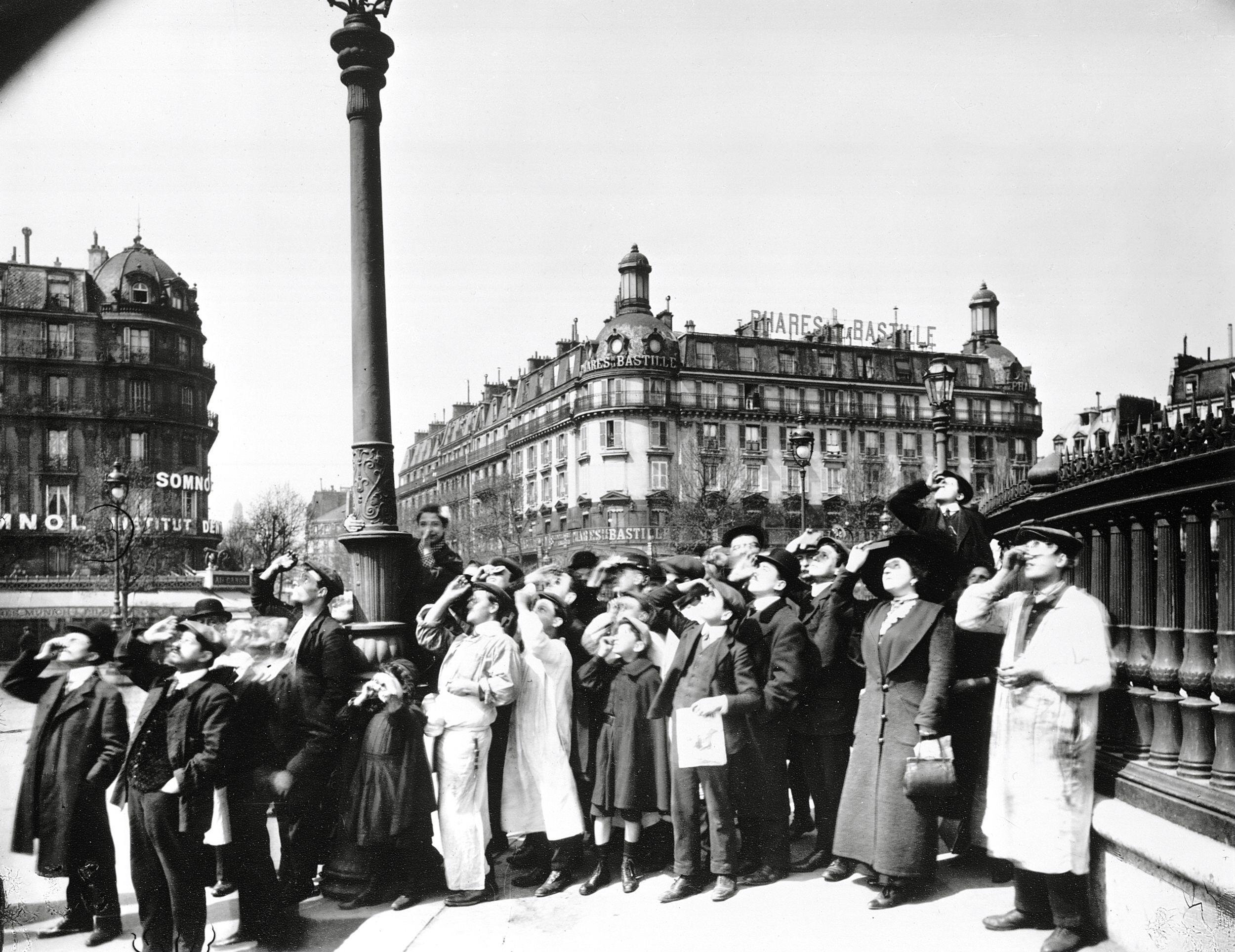 Eclipse, 1911
Eclipse, 1911 Photograph by Eugène Atget, 'Eclipse, 1911'. A gold-toned gelatin silver print No. 4 from the portfolio '20 Photographs by Eugène Atget', published and printed in 1956 by Berenice Abbott from Atget's original negatives.
-
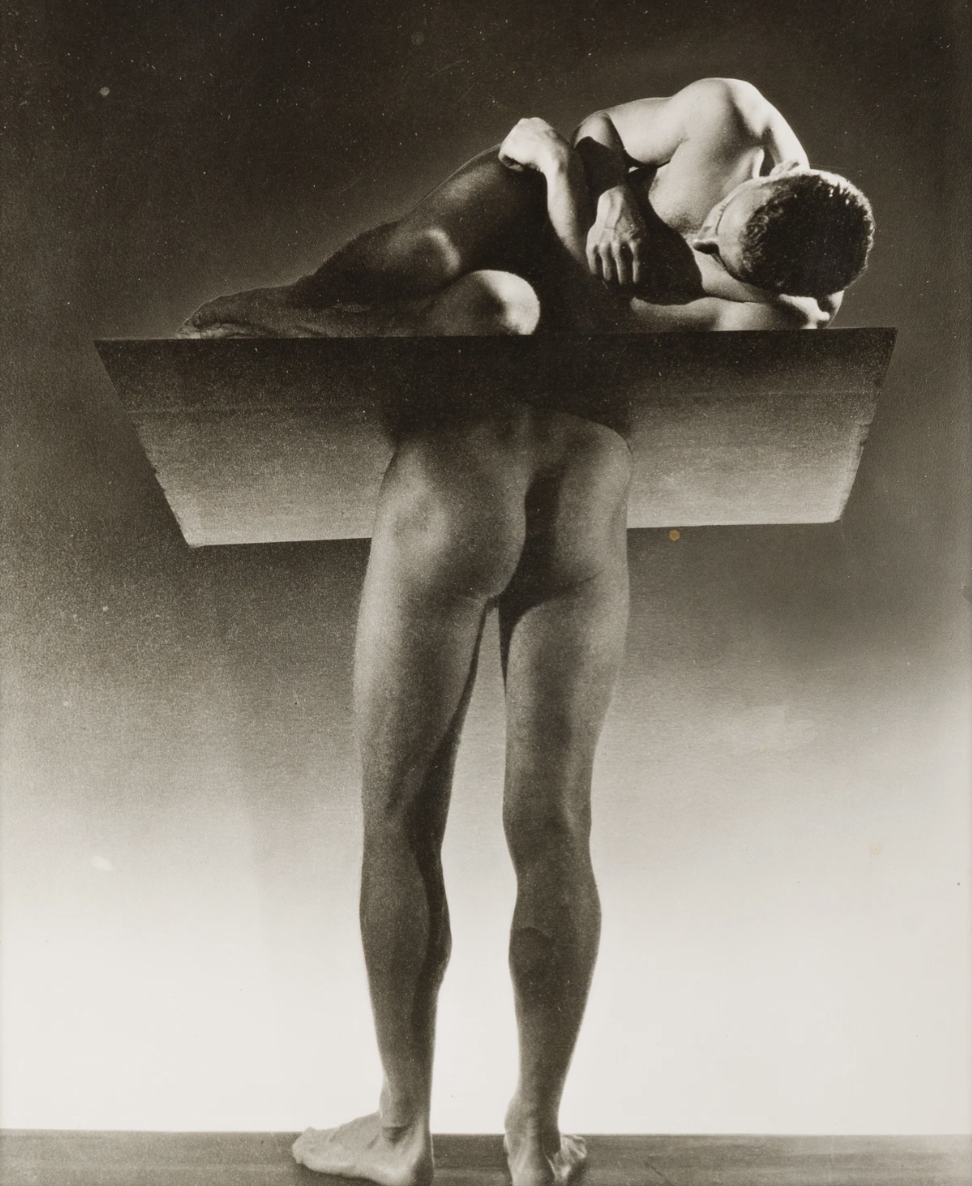 The Sleepwalker
The Sleepwalker Gelatin silver print with applied media
-
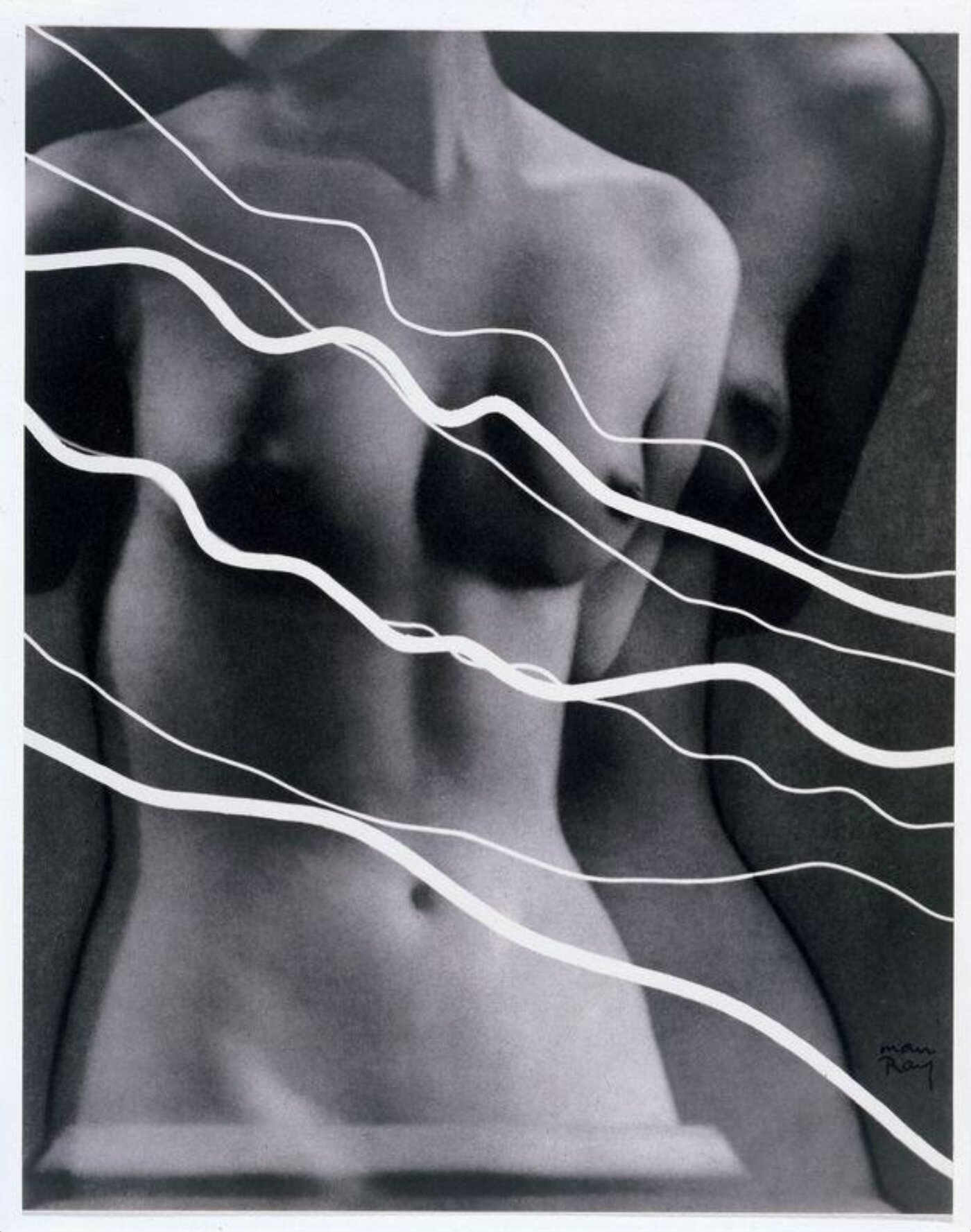 Eléctricité
Eléctricité Photograph by Man Ray, 'Electricite' (image of torso of Lee Miller with photograms of ribbons representing electric current) from the 'Electricite' portfolio, published by the Compagnie Parisienne de Distribution de l'Electricite, Paris, 1931.
-
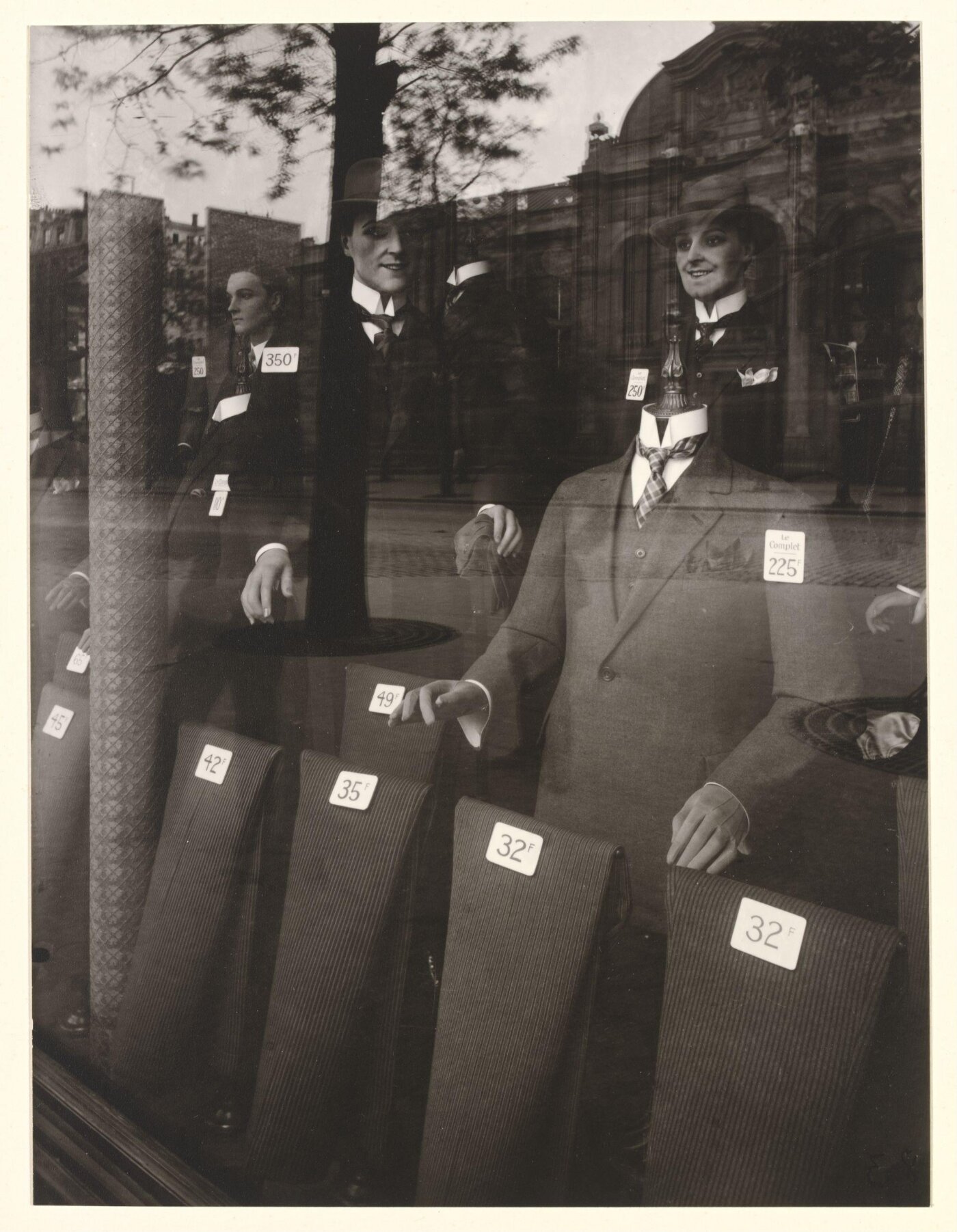 Men's Fashions
Men's Fashions A gold-toned black and white photograph of a shop window with mens clothing and a reflection of the streetscape. One of twenty images from the portfolio '20 Photographs by Eugène Atget', published and printed by Berenice Abbott.
The print is trimmed to image and mounted on Strathmore board.
-
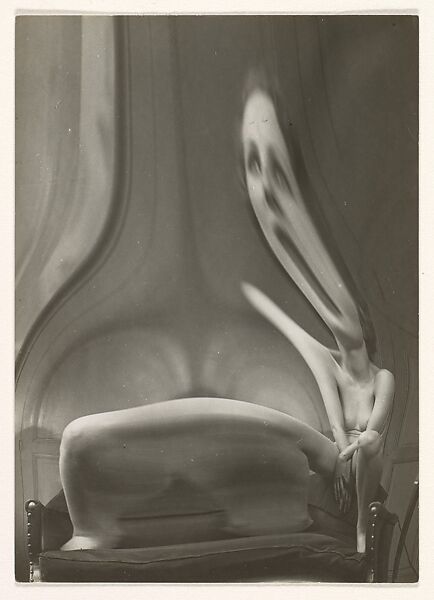 Distortion #51
Distortion #51 Distorted Nude Photograph
-
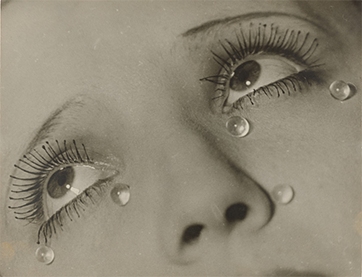 Larmes (Tears)
Larmes (Tears) Man Ray made this photograph in Paris around the time of his breakup with his lover Lee Miller, and the woman's false tears may relate to that event in the artist's life.
-
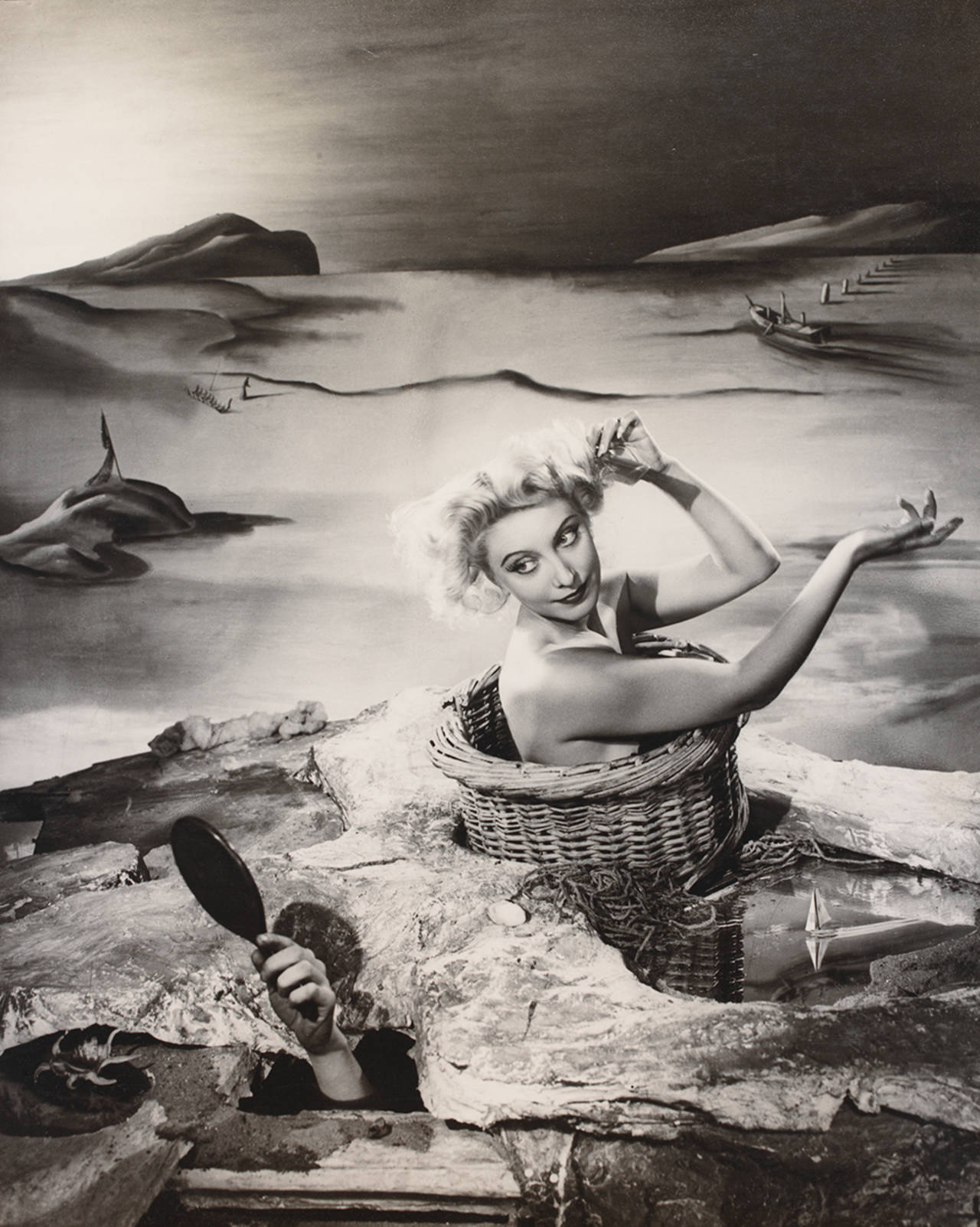 A Day Dream
A Day Dream Photograph, 'A Day Dream' by Angus McBean, 20th century
-
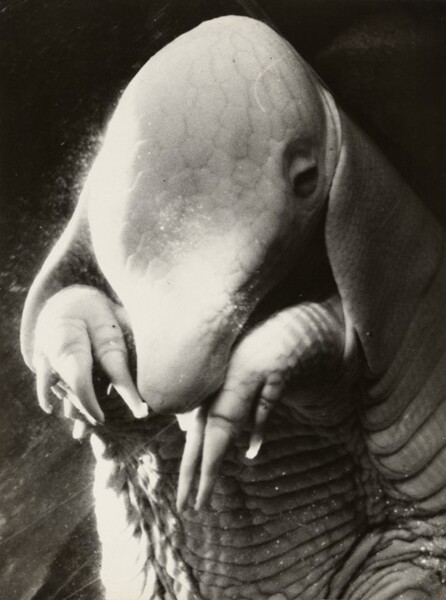 Père Ubu
Père Ubu Photograph
-
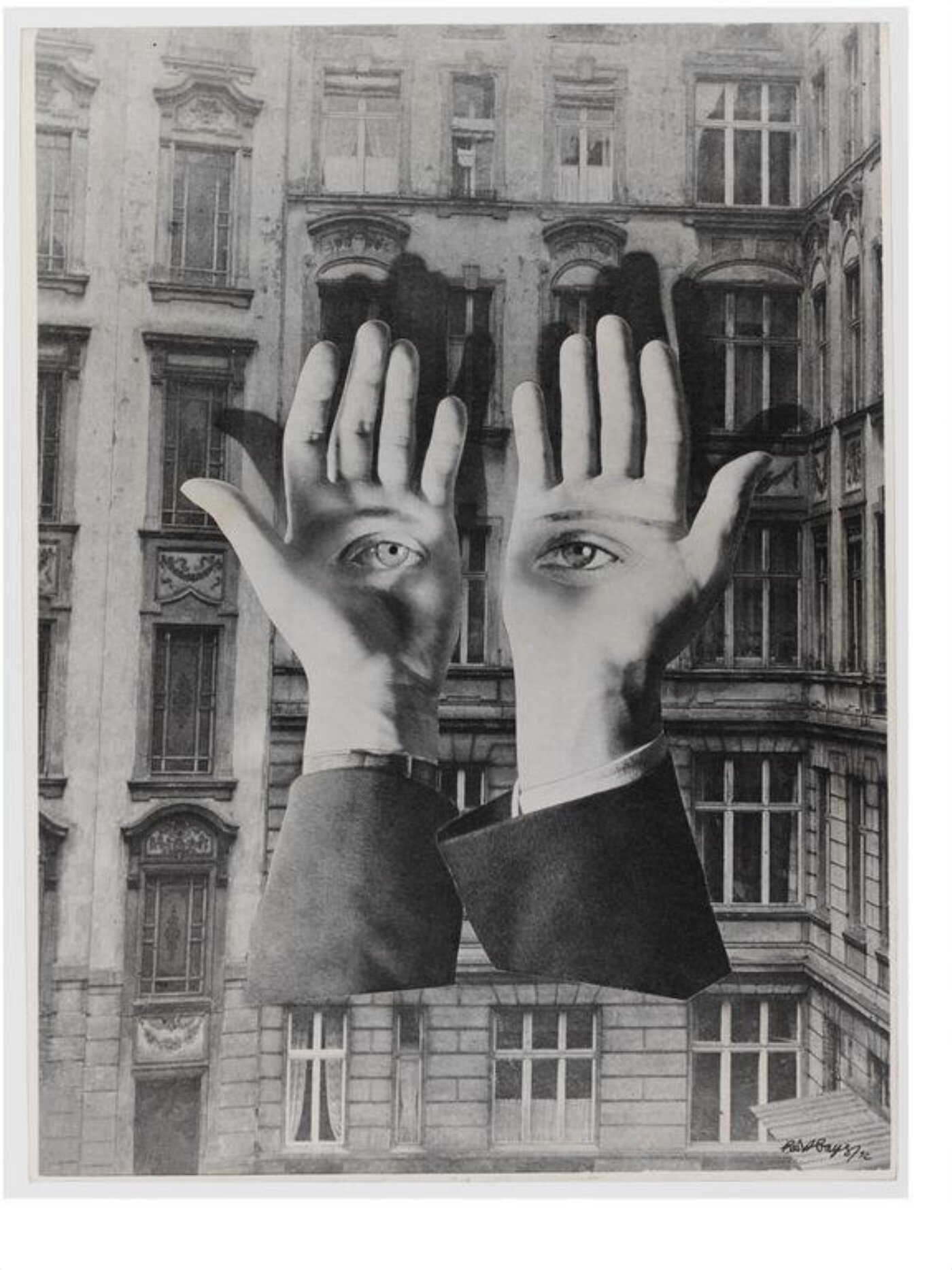 The Lonely Metropolitan
The Lonely Metropolitan 20thC; Bayer Herbert, The Lonely Metropolitan, 1932
Photomontage
-
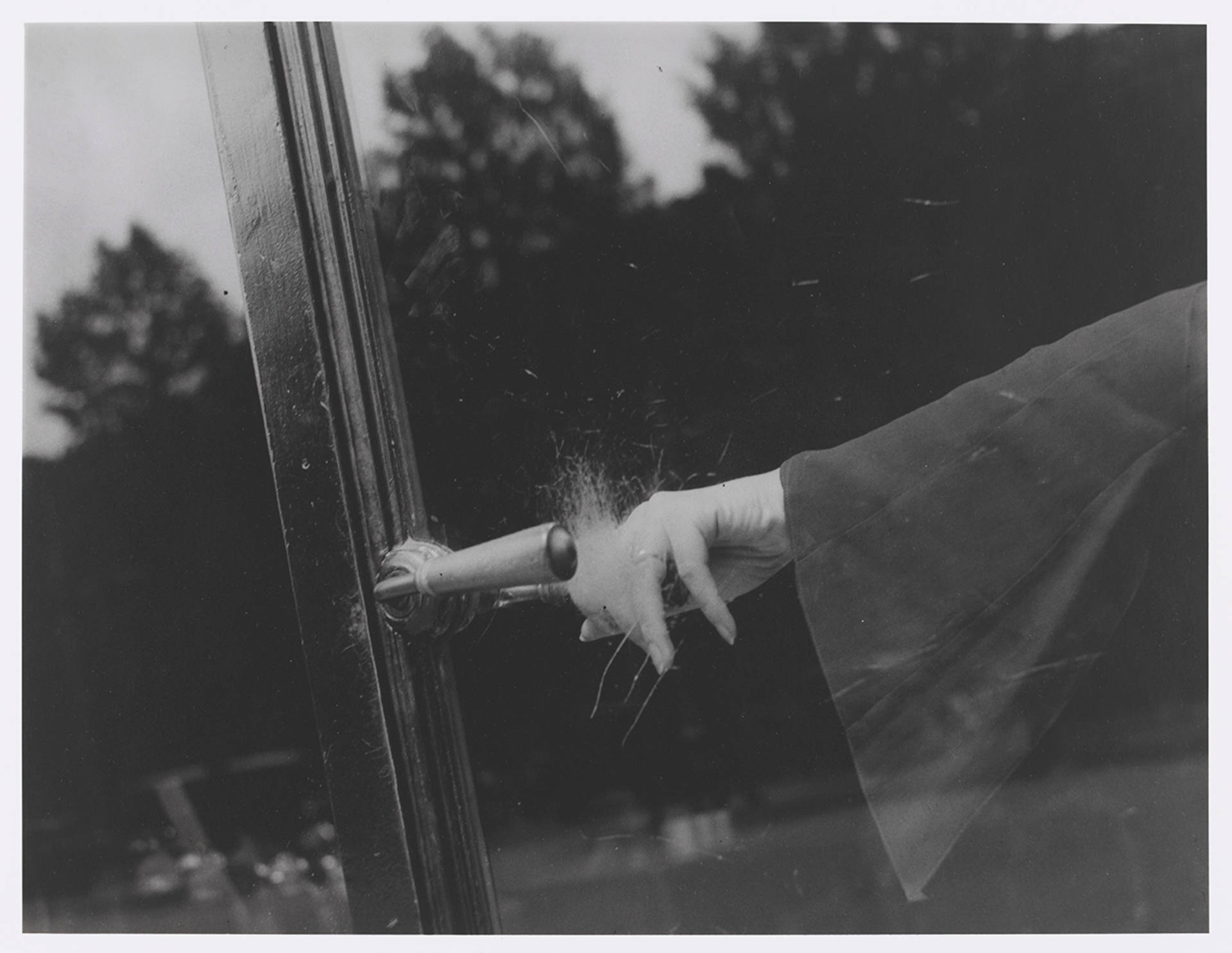 Exploding Hand
Exploding Hand 20thC; Gelatin-silver print; Miller, Lee. Exploding Hand, 1930
Black and white photograph of a hand on the door handle of a jewelers, the door scratched and reflective.
-
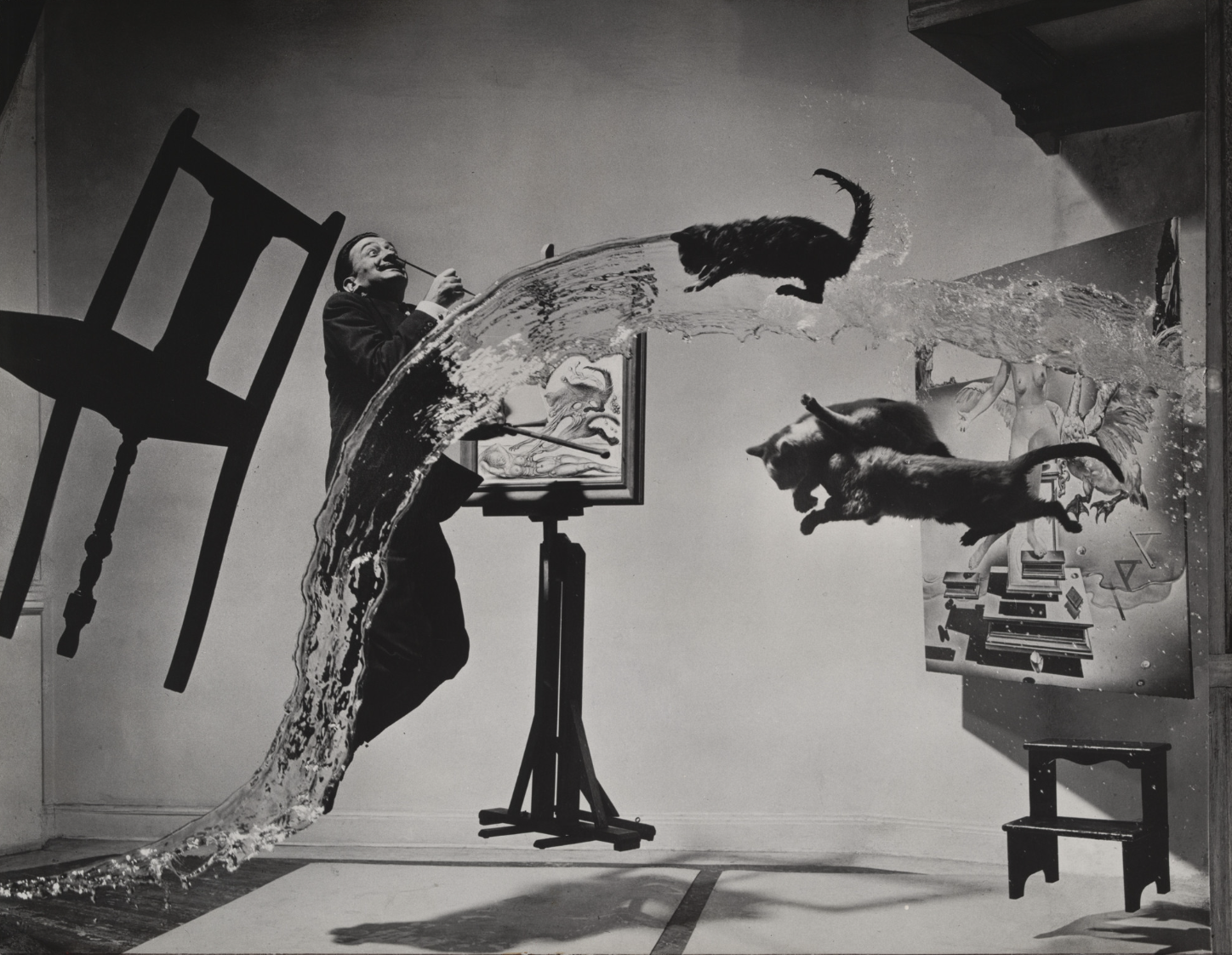 Dali Atomicus
Dali Atomicus Dali Atomicus emerged from the collaboration between photographer Philippe Halsman and artist Salvador Dalí, it is a portrait of the artist inspired by his painting, Leda Atomica (1949), which appears in the composition’s right-hand corner.
 Sueño No. 1: "Articulos eléctricos para el hogar" In 1948 the Argentine women’s magazine Idilio introduced a weekly column called “Psychoanalysis Will Help You,” which invited readers to submit their dreams for analysis. Each week, one dream was illustrated with a photomontage by Stern, a Bauhaus-trained photographer and graphic designer who fled Berlin for Buenos Aires when the Nazis came to power. Over three years, Stern created 140 photomontages for the magazine, translating the unconscious fears and desires of its predominantly female readership into clever, compelling images. Here, a masculine hand swoops in to “turn on” a lamp whose base is a tiny, elegantly dressed woman. Rarely has female objectification been so erotically and electrically charged.
Sueño No. 1: "Articulos eléctricos para el hogar" In 1948 the Argentine women’s magazine Idilio introduced a weekly column called “Psychoanalysis Will Help You,” which invited readers to submit their dreams for analysis. Each week, one dream was illustrated with a photomontage by Stern, a Bauhaus-trained photographer and graphic designer who fled Berlin for Buenos Aires when the Nazis came to power. Over three years, Stern created 140 photomontages for the magazine, translating the unconscious fears and desires of its predominantly female readership into clever, compelling images. Here, a masculine hand swoops in to “turn on” a lamp whose base is a tiny, elegantly dressed woman. Rarely has female objectification been so erotically and electrically charged. The Doll Bellmer's obsession with dolls-his endless fabrication, reconstitution, and photographic presentation of them-was an effort to construct objects that would articulate his tortured desires in material form. The bizarre, robotic temptress in this negative print has an eerie electric aura. To love her, one would have to have, as the Surrealist poet Pierre Reverdy wrote, a "short circuit in the heart-system."
The Doll Bellmer's obsession with dolls-his endless fabrication, reconstitution, and photographic presentation of them-was an effort to construct objects that would articulate his tortured desires in material form. The bizarre, robotic temptress in this negative print has an eerie electric aura. To love her, one would have to have, as the Surrealist poet Pierre Reverdy wrote, a "short circuit in the heart-system." Le Violon d'Ingres (Ingres's Violin) Man Ray was an admirer of the paintings of Jean-Auguste-Dominique Ingres and made a series of photographs, inspired by Ingres's languorous nudes, of the model Kiki in a turban. Painting the f-holes of a stringed instrument onto the photographic print and then rephotographing the print, Man Ray altered what was originally a classical nude. He also added the title Le Violon d'Ingres, a French idiom that means "hobby." The transformation of Kiki's body into a musical instrument with the crude addition of a few brushstrokes makes this a humorous image, but her armless form is also disturbing to contemplate. The title seems to suggest that, while playing the violin was Ingres's hobby, toying with Kiki was a pastime of Man Ray. The picture maintains a tension between objectification and appreciation of the female form.
Le Violon d'Ingres (Ingres's Violin) Man Ray was an admirer of the paintings of Jean-Auguste-Dominique Ingres and made a series of photographs, inspired by Ingres's languorous nudes, of the model Kiki in a turban. Painting the f-holes of a stringed instrument onto the photographic print and then rephotographing the print, Man Ray altered what was originally a classical nude. He also added the title Le Violon d'Ingres, a French idiom that means "hobby." The transformation of Kiki's body into a musical instrument with the crude addition of a few brushstrokes makes this a humorous image, but her armless form is also disturbing to contemplate. The title seems to suggest that, while playing the violin was Ingres's hobby, toying with Kiki was a pastime of Man Ray. The picture maintains a tension between objectification and appreciation of the female form. Composition This photograph is informed by the artist's experiences as an advertising photographer, X-ray technician, and assistant to Man Ray. Printing through a sandwich of several negatives.
Composition This photograph is informed by the artist's experiences as an advertising photographer, X-ray technician, and assistant to Man Ray. Printing through a sandwich of several negatives. Valise d'Adam Against a backdrop of rusting metal, Frederick Sommer arranged a grouping of found objects. A clipboard clamp represents a head and shoulders while dirty, cracking doll's arms and legs provide more literal context, defining the object as a human body. Within that fragmented body, Sommer places a complete doll with its head pointed downward, as if ready to be born. The photograph's French title, Valise d'Adam, or as Sommer translated it, Adam's Traveling Case, is a sly reference to the idea that man travels through woman into the world, and perhaps, woman even carries man through life.
Valise d'Adam Against a backdrop of rusting metal, Frederick Sommer arranged a grouping of found objects. A clipboard clamp represents a head and shoulders while dirty, cracking doll's arms and legs provide more literal context, defining the object as a human body. Within that fragmented body, Sommer places a complete doll with its head pointed downward, as if ready to be born. The photograph's French title, Valise d'Adam, or as Sommer translated it, Adam's Traveling Case, is a sly reference to the idea that man travels through woman into the world, and perhaps, woman even carries man through life. Mystery of the Street This photograph does not describe what Otto Umbehr saw when he looked out his window in Berlin, but what he discovered when he turned his overhead view of the street upside-down. His simple inversion (indicated by his signature "Umbo" in the lower right corner) posits an unsettling world in which the insubstantial dominates the substantial, and imagination intercepts cognition.
Mystery of the Street This photograph does not describe what Otto Umbehr saw when he looked out his window in Berlin, but what he discovered when he turned his overhead view of the street upside-down. His simple inversion (indicated by his signature "Umbo" in the lower right corner) posits an unsettling world in which the insubstantial dominates the substantial, and imagination intercepts cognition. Cavalier Surrealist Gelatin Silver Print; Photographic Print created by Dora Maar in c.1936.
Cavalier Surrealist Gelatin Silver Print; Photographic Print created by Dora Maar in c.1936. Per Annum John Havinden was one of London's leading commercial photographers of the 1930s. He used this image for his trade calendar in 1936, the year that the International Surrealist Exhibition was held in London. It shows the combined influence on his work of Surrealism and the modernist design aesthetic. The abstract composition is based on formal, geometric elements but rendered mysterious by the atmospheric background and dramatic lighting.
Per Annum John Havinden was one of London's leading commercial photographers of the 1930s. He used this image for his trade calendar in 1936, the year that the International Surrealist Exhibition was held in London. It shows the combined influence on his work of Surrealism and the modernist design aesthetic. The abstract composition is based on formal, geometric elements but rendered mysterious by the atmospheric background and dramatic lighting. Edward James in front of "On the Threshold of Liberty" Edward James was an eccentric poet, collector, and patron of both Dalí and Magritte. In 1937, when Magritte visited James in London, he painted a vertical version of his 1929 canvas On the Threshold of Liberty to install in the stairwell; he also photographed his host and patron in front of the painting.
Edward James in front of "On the Threshold of Liberty" Edward James was an eccentric poet, collector, and patron of both Dalí and Magritte. In 1937, when Magritte visited James in London, he painted a vertical version of his 1929 canvas On the Threshold of Liberty to install in the stairwell; he also photographed his host and patron in front of the painting. Eclipse, 1911 Photograph by Eugène Atget, 'Eclipse, 1911'. A gold-toned gelatin silver print No. 4 from the portfolio '20 Photographs by Eugène Atget', published and printed in 1956 by Berenice Abbott from Atget's original negatives.
Eclipse, 1911 Photograph by Eugène Atget, 'Eclipse, 1911'. A gold-toned gelatin silver print No. 4 from the portfolio '20 Photographs by Eugène Atget', published and printed in 1956 by Berenice Abbott from Atget's original negatives. The Sleepwalker Gelatin silver print with applied media
The Sleepwalker Gelatin silver print with applied media Eléctricité Photograph by Man Ray, 'Electricite' (image of torso of Lee Miller with photograms of ribbons representing electric current) from the 'Electricite' portfolio, published by the Compagnie Parisienne de Distribution de l'Electricite, Paris, 1931.
Eléctricité Photograph by Man Ray, 'Electricite' (image of torso of Lee Miller with photograms of ribbons representing electric current) from the 'Electricite' portfolio, published by the Compagnie Parisienne de Distribution de l'Electricite, Paris, 1931. Men's Fashions A gold-toned black and white photograph of a shop window with mens clothing and a reflection of the streetscape. One of twenty images from the portfolio '20 Photographs by Eugène Atget', published and printed by Berenice Abbott. The print is trimmed to image and mounted on Strathmore board.
Men's Fashions A gold-toned black and white photograph of a shop window with mens clothing and a reflection of the streetscape. One of twenty images from the portfolio '20 Photographs by Eugène Atget', published and printed by Berenice Abbott. The print is trimmed to image and mounted on Strathmore board. Distortion #51 Distorted Nude Photograph
Distortion #51 Distorted Nude Photograph Larmes (Tears) Man Ray made this photograph in Paris around the time of his breakup with his lover Lee Miller, and the woman's false tears may relate to that event in the artist's life.
Larmes (Tears) Man Ray made this photograph in Paris around the time of his breakup with his lover Lee Miller, and the woman's false tears may relate to that event in the artist's life. A Day Dream Photograph, 'A Day Dream' by Angus McBean, 20th century
A Day Dream Photograph, 'A Day Dream' by Angus McBean, 20th century Père Ubu Photograph
Père Ubu Photograph The Lonely Metropolitan 20thC; Bayer Herbert, The Lonely Metropolitan, 1932 Photomontage
The Lonely Metropolitan 20thC; Bayer Herbert, The Lonely Metropolitan, 1932 Photomontage Exploding Hand 20thC; Gelatin-silver print; Miller, Lee. Exploding Hand, 1930 Black and white photograph of a hand on the door handle of a jewelers, the door scratched and reflective.
Exploding Hand 20thC; Gelatin-silver print; Miller, Lee. Exploding Hand, 1930 Black and white photograph of a hand on the door handle of a jewelers, the door scratched and reflective. Dali Atomicus Dali Atomicus emerged from the collaboration between photographer Philippe Halsman and artist Salvador Dalí, it is a portrait of the artist inspired by his painting, Leda Atomica (1949), which appears in the composition’s right-hand corner.
Dali Atomicus Dali Atomicus emerged from the collaboration between photographer Philippe Halsman and artist Salvador Dalí, it is a portrait of the artist inspired by his painting, Leda Atomica (1949), which appears in the composition’s right-hand corner.